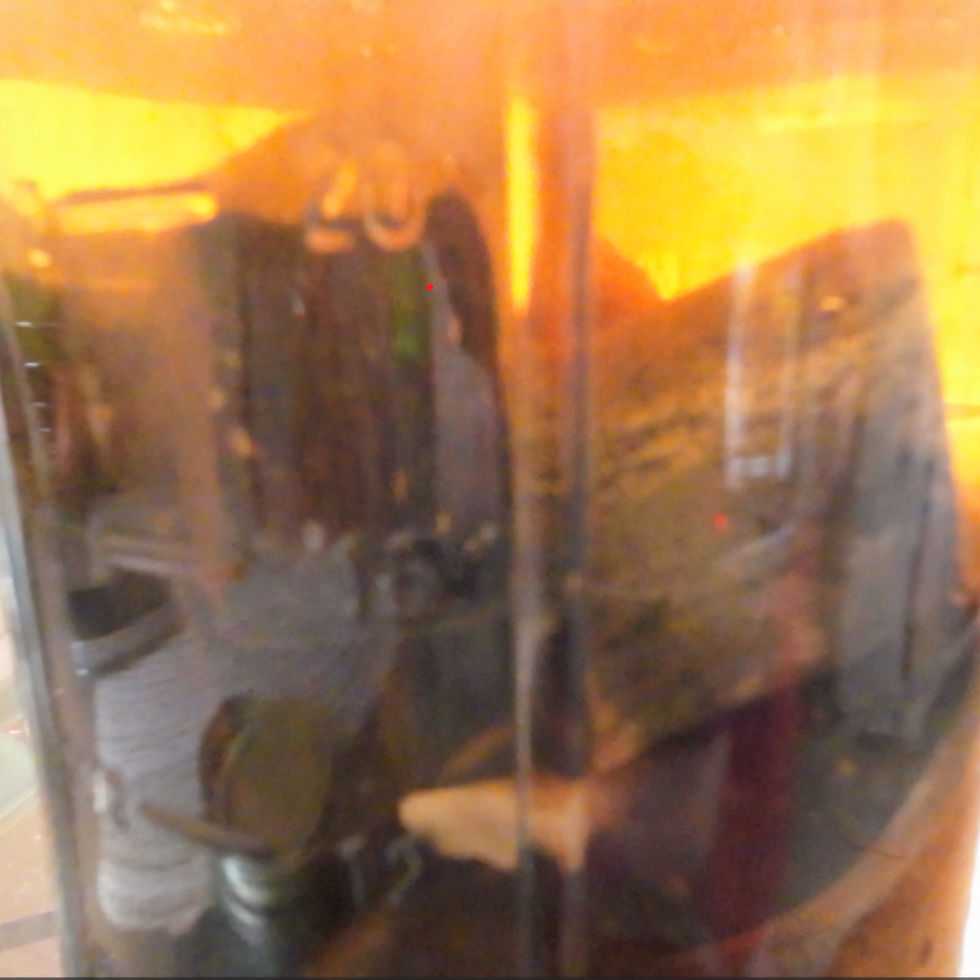WATER-SOLUBLE CALCIUM PHOSPHATE (WCaP)
- Sherri Miller

- Sep 18
- 3 min read

WATER-SOLUBLE CALCIUM PHOSPHATE (WCaP)
SOURCE MATERIAL Bones of Vertebrates
SOLVENT Brown Rice Vinegar (BRV)
CHARACTERISTICS OF CALCIUM PHOSPHATE
1. Water-Soluble Calcium Phosphate (WCaP) is leached from the bones of vertebrate animals. It is an essential substance for plant growth and is widely distributed in the soil. Calcium Phosphate is insoluble in water but soluble in acids. This property is used in Natural Farming to make a product that is bioavailable to plants.
2. Provides two essential elements:
Calcium (Ca) → strengthens cell walls, root tips, and reduces physiological disorders.
Phosphorus (P) → vital for energy transfer (ATP), root growth, flowering, and fruiting.
3. Both are immobile in soil. However, we create a water-soluble form and apply it as part of a foliar spray formula.
4. WCaP supports root development and early seedling vigor. It helps balance the Ca:P ratio, critical for structural growth and reproductive development.
5. For plants, it strengthens tissues (Ca) while fueling energy metabolism and reproduction (P).
SYMPTOMS OF DEFICIENCY
If a plant lacks calcium phosphate, the symptoms will be:
At the growing tips → Ca deficiency symptoms (distorted new leaves, blossom end rot, tip burn, weak roots).
On older leaves → P deficiency symptoms (dark green/purple leaves, stunting, delayed maturity).
So, the “deficiency of calcium phosphate” is really a combined expression of calcium and phosphorus deficiency, depending on which element is more limiting in that situation. Using them together in a form found in Nature (animal bones) keeps these nutrients in balance.
SYMPTOMS OF EXCESS
Overuse can cause P accumulation in soil, which ties up zinc and iron, and Ca buildup, which can limit magnesium and potassium uptake.
NUTRITIVE STAGES TO USE IN FORMULAS
Calcium Phosphate is important in the soil and for seedlings. It is also helpful during the cross-over phase, when flower buds are forming.
HOW TO MAKE
Tools: Clay jar, cedar bucket, or glass jar, with a breathable cover (like muslin) and a string or band to secure the cover.
Materials: Bones of vertebrates (pig, cow, or fish), and Fermented Brown Rice Vinegar (BRV) or Fermented Banana Vinegar
Environmental Conditions: This process is optimum in the temperature range of 23-25C (73-77F). It should be kept away from heat and direct sunlight. A stable environment with little change is ideal.
Methods:
1. Use boiled bones, not raw bones, on which no meat or fat is attached. Turn the bones into a charcoal state by burning them at a low temperature. This process is necessary to burn organic and fatty substances. The bones should turn black and become lighter. If they turn from black to white, they have been overcooked and should not be used.
2. Use the charcoal of the bones as they are, or pound them into small pieces, not powder. Put the bones into the jar with BRV in a ratio of 1:10.
3. Calcium Phosphate is leached from the bones.
4. You will see small bubbles, similar to WCa with eggshells. Once there are no longer any bubbles, the process is complete. This takes about 7 days. The remaining bones can be reused by adding to a jar of fresh vinegar.
HOW TO USE WCaP
1. Use as a drinking water for livestock that are pregnant or ovulating at a dilution ratio of 1:500.
2. Use after diluting with water. The basic dilution ratio is 1:1000. Use as part of a formula, not alone.
3. Spray WCaP on leaves during the periods of cross-over and vegetative growth.
4. Use WCaP when the crop overgrows.
5. Use WCaP when the weather is bad.
6. Use WCaP when the initial growth is poor.
7. Use WCaP when the flower buds have weak differentiation.




Comments